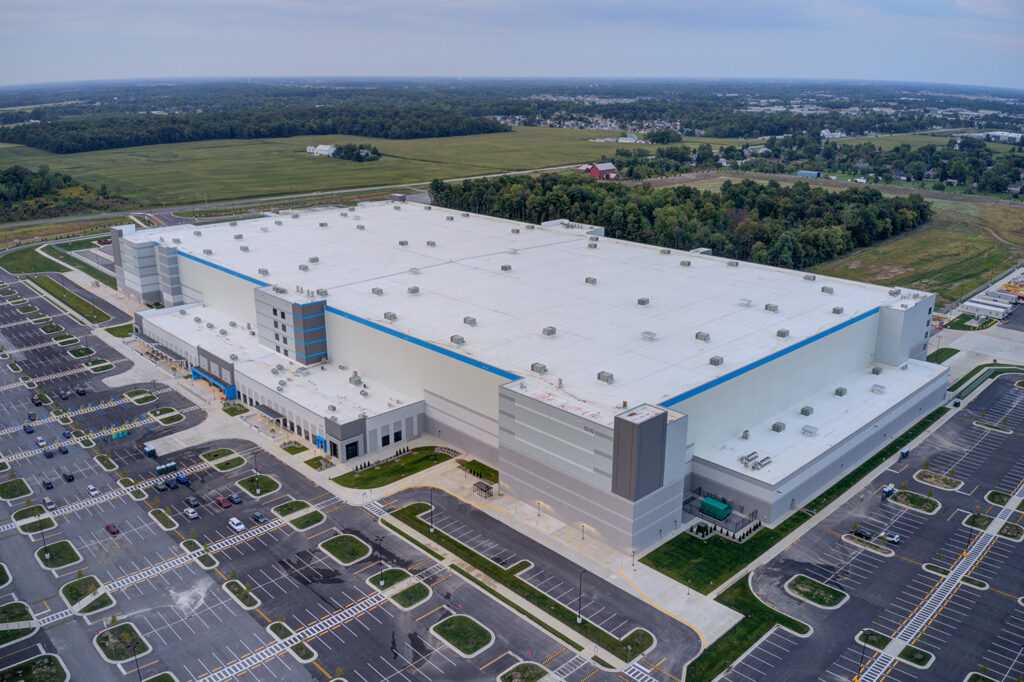Our largest clients are pushing for carbon neutrality and innovation in sustainable construction has become a top priority. In the industrial sector, great strides are being made to reduce the embodied carbon of a project through the selection of low carbon materials.
In 2021, an opportunity arose to work with a client on a project that began as an endeavor to simply benchmark the embodied carbon. However, through collaboration, the team ultimately decided this project was an opportunity to both reduce the overall carbon footprint and pilot the use of CarbonCure Technologies—a technology that introduces recycled CO2 into concrete. The technology injects a precise dosage of captured carbon dioxide into concrete during mixing, where it mineralized. This improves the concrete’s compressive strength, enabling mix optimization and significant carbon footprint reductions as well as cost savings.
With our VDC team, we examined the Revit model utilizing Tally software to get an understanding of the LCA of the project and see where the greatest possible impacts could be made. We learned what the industry fully understands now: that concrete has the greatest contribution to the carbon emissions of a traditionally designed project.

Through the examination of the concrete mix design and working with our national network of concrete suppliers, we learned that the automated robotic fulfillment center in Fort Wayne, Indiana posed the best opportunity to apply CarbonCure Technologies and submit an alternate mix design for portions of the structure and foundations. Our goal was to provide the desired performance and aesthetics while also reducing embodied carbon.
Implementing CarbonCure’s concrete technology to lower the carbon footprint
To lower the carbon footprint of a 2.9Msf automated robotic fulfillment center, the Layton project team deployed CarbonCure’s sustainable concrete solution to set the precedent for future projects. The project team performed two test concrete pours on the project, a 21,600sf (528cy3) slab-on-grade (SOG) pour and a 30,200sf (604 cy3) slab-on-deck pour. Additionally, CarbonCure is in all the footings and foundations of the project, which is approximately 15,500cy3 on top of the SOG and SOD pours.
Working with the client’s concrete consultants testing and field observations were reported to ensure that the overall performance criteria were met. By using CarbonCure, the project team reduces the embodied carbon of the project and sets the standard for more green building practices on large scale projects.
Protecting Local Biodiversity
The project scope included safeguarding 50 acres of wooded area and adjacent wetlands to protect the Indiana bat (Myotis sodalis), a state and federally endangered species, along with other local flora and fauna.